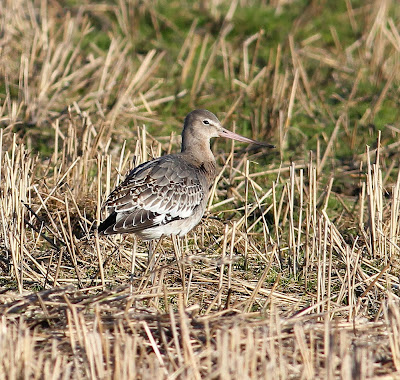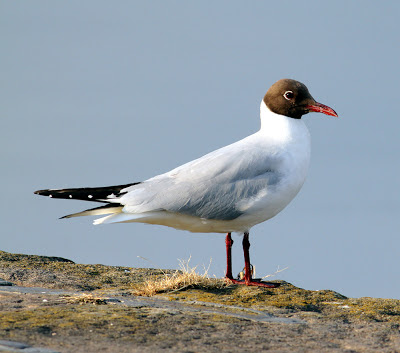I sprayed defroster on the windscreen and then started the old girl up to see the temperature indicator flashing a “1°” warning. Definitely a morning for the heated seat and not hanging around on street corners, so stand by for a mixed bunch of stuff from this morning’s rapid transit whereby I managed five different birding spots in four hours.
In the half-light there seemed to be good numbers of Little Egrets in the Pilling Roost so I stopped to examine the ghostly shapes in more detail. After two counts the best I could get was 36 and by then the early risers were already on their way out of the trees, others stirring as if to go. Early Whooper Swans, 30+, were flying over from their roost way out on the marsh and then heading south towards the fields of Eagland Hill where counts of 300+ Whoopers are now an everyday occurrence.
Soon I headed back to Knott End and a check of the 0830 tide. The biting south-easterly wind made for a brief but bitterly cold look, with 1300 Oystercatcher, 6 Turnstone, 85 Dunlin, 60+ Redshank, 70+ Shelduck, 15 Curlew, 140 Lapwing, 12 Twite and 2 Pied Wagtails.
Shelduck
On passing Lane Ends again I could see a flock of mainly Lapwing which upon closer inspection revealed 6 Redshank, 80+ Starlings and 320 Lapwings. There were more Lapwings and also 120+ Golden Plovers on the Cockerham flash floods and then as I scoped the sea wall, 2 Buzzards again, the birds on foot prospecting both along and up & down the embankment.
I’m not having much luck finding the unseasonal Common Sandpiper at Conder Green, but the 2 wintering Spotted Redshank are ultra-reliable in the creeks below the road, as they were again.
I’m not having much luck finding the unseasonal Common Sandpiper at Conder Green, but the 2 wintering Spotted Redshank are ultra-reliable in the creeks below the road, as they were again.
Spotted Redshank
Also there today and as combined pool and creek counts, 280+ Teal, 30 Wigeon, 6 Curlew, 5 Little Grebe, 15 Lapwing, 4 Goldeneye, 3 Goosander, 1 Tufted Duck. Below is not a very good and also rushed Goosander shot with the equally wary Teal somewhat distant.
Goosander
Teal
It was here that a walk around the block produced most of the Teal count, also 18 House Sparrow, 1 Tree Sparrow, 1 Reed Bunting, and on the outer marsh 20+ Linnets.
A wildfowl count at Glasson Dock gave 55 Tufted Duck, 20 Goldeneye, 4 Cormorant, 1 Pochard, 1 Grey Heron and 4 Mute Swan.
Tufted Duck
I know for sure that next week’s birding will heat up considerably, so stick around Another Bird Blog to see why.
Linking today to Stewart's Wild Bird Wednesday.
Linking today to Stewart's Wild Bird Wednesday.















































































